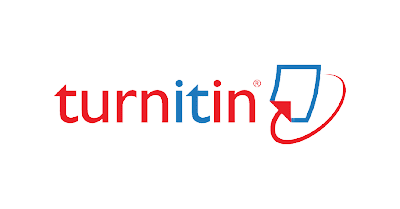EVALUASI FITNESS FUNCTION APLIKASI PBB ONLINE MENGGUNAKAN PENDEKATAN HOT FIT MODEL
Abstract
Sumber pemasukan negara terbesar di Indonesia adalah lewat penerimaan pajak. Pembagian penerimaan pajak dibagi menjadi 2, yaitu Pajak Pusat yang dikelola langsung oleh Direktorat Jendral Pajak dan Pajak Daerah yang dikelola oleh Pemerintah Provinsi dan Pemerintah Kota/Kabupaten. Sebagai kota terbesar kedua di Indonesia, Kota Surabayatelah menjadi kota pertama yang menjadi percontohan untuk pengelolaan pajak daerah sendiri sejak tahun 2011 yang dikelola oleh pemerintah kota salah satunya adalah Pajak Bumi dan Bangunan (PBB). Dalam mengoptimalkan pelayanan maka sejak bulan Februari 2017 Wajib Pajak dapat mengajukan permohonan pelayanan PBB secara online melalui aplikasi berbasis situs web. Hingga saat ini situs pelayanan PBB online masih terus beroprasi dan belum ada evaluasi yang dilakukan. Oleh karena itu diperlukan sebuah evaluasi untuk situs pelayanan yang ada saat ini. Terdapat beberapa metode yang dapat dilakukan dalam memberikan evaluasi seperti Task TechnologyFit (TTF) Analysis, End User Satisfaction, Technology Acceptance Model (TAM), dan Hot Fit Model. Hot Fit Model merupakan model yang lengkap dan paling sesuai dengan kondisi permasalahan yang ada karena menangani variabel Komponen Manusia (Human), Komponen Organisasi (Organization), dan Komponen Teknologi (Technology). Penelitian ini menghasilkan hipotesis yang diajukan banyak yang sudah memenuhi dan masih ada yang belum memenuhi. Adapun faktor-faktor yang paling berpengaruh hingga kurang berpengaruh adalah Kualitas Layanan > Kualitas Informasi > Struktur (Organisasi) > Kepuasan Pengguna > Kualitas Sistem > Penggunaan Sistem.
Downloads
References
Adila, R. N., & Dahtiah, N. (2020). Evaluasi Penerapan Sistem E-Budgeting dengan Pendekatan Human Organization Technology Fit Model pada Pemerintah Provinsi Jawa Barat. Prosiding Industrial Research Workshop and National Seminar, 11(1), 847–853.
Akbar, R., & Mukhtar. (2019). Evaluasi e-tracer study menggunakan HOT (Human-Organization-Technology) Fit model. Jurnal JTIK (Jurnal Teknologi Informasi Dan Komunikasi), 3(2). http://download.garuda.kemdikbud.go.id/article.php?article=1283715&val=17177&title=Evaluasi%20e-Tracer%20Study%20menggunakan%20HOT%20Human-Organization-Technology%20Fit%20Model
Ayuardini, M., & Ridwan, A. (2019). Implementasi metode Hot Fit pada evaluasi tingkat kesuksesan sistem pengisian KRS terkomputerisasi. Faktor Exacta, 12(2), 122–131.
Borman, R. I., Rosidi, A., & Arief, M. R. (2017). Evaluasi penerapan sistem informasi manajemen kepegawaian (simpeg) di badan kepegawaian daerah kabupaten pamekasan dengan pendekatan human-organization-technology (hot) fit model. Respati, 7(20).
Direktorat Jenderal Pajak Kementerian Keuang, "Pengalihan PBB Perdesaan dan Perkotaan," 5 Desember 2012. [Online]. Available: http://www.pajak.go.id/content/pengalihan-pbb-perdesaan-dan-perkotaan. [Accessed 5 Januari 2018].
Franki, F., & Sari, I. (2022). Evaluasi Rekam Medis Elektronik dengan Metode HOT-fit di Klinik Saraf RS Mitra Plumbon. Jurnal Penelitian Kesehatan" SUARA FORIKES"(Journal of Health Research" Forikes Voice"), 13(1), 43–51.
F. Tjiptono, Manajemen Jasa, Yogyakarta: ANDI Offset, 2004.
Khasanah, L., & Imani, F. F. (2022). Literature Review Evaluasi Implementasi Sistem Informasi Manajemen Rumah Sakit (SIMRS) Dengan Metode Hot-Fit. Jurnal Kesehatan Hesti Wira Sakti, 10(1), 1–8.
Kodoati, K. S., & Hartomo, K. D. (2022). Evaluasi Keberhasilan F-Learn Menggunakan Human Organization Technology (HOT) Fit Model pada Universitas Kristen Satya Wacana. JATISI (Jurnal Teknik Informatika Dan Sistem Informasi), 9(3), 2096–2111.
L. Erlirianto, A. Ali and A. Herdiyanti, "The Implementation of the Human,Organization, and Technology-Fit (HOT-Fit) Framework to Evaluate the Electronic Medical Record (EMR) System in a Hospital," in Procedia Computer Science 72, 2015.
Makalalag, D., Agushybana, F., & Mawarni, A. (2017). Evaluasi Sistem Informasi Pelayanan Rekam Medis di RSJ Prof. Dr. VL Ratumbuysang Provinsi Sulawesi Utara dengan Pendekatan Hot Fit Model. Jurnal Manajemen Kesehatan Indonesia, 5(2), 82–93.
Mujianto, A. H., Soedijono, B., & Henderi, H. (2017). Pengukuran tingkat kesuksesan penerapan website Penerimaan Mahasiswa Baru (PMB) online di perguruan tinggi swasta dengan pendekatan Human Organization Technology (HOT) Fit model. Register: Jurnal Ilmiah Teknologi Sistem Informasi, 3(1), 24–33.
Nofikasari, I., WA, B. S., & Sunyoto, A. (2016). Evaluasi Penerapan Sistem Informasi Akademik Dengan Pendekatan Model Delone & McLean, HOT FIT dan UTAUT (Studi Kasus: STMIK Duta Bangsa Surakarta). DutaCom, 12(1), 81–90.
Puspitasari, E. R., & Nugroho, E. (2018). Evaluasi implementasi sistem informasi manajemen rumah sakit di rsud kabupaten temanggung dengan menggunakan metode hot-fit. Journal of Information Systems for Public Health, 5(3), 45–60.
Putra, A. D., Dangnga, M. S., & Majid, M. (2020). Evaluasi sistem informasi manajemen rumah sakit (SIMRS) dengan metode hot fit di RSUD Andi Makkasau Kota Parepare. Jurnal Ilmiah Manusia Dan Kesehatan, 3(1), 61–68.
Rozanda, N., & Masriana, A. (2017). Perbandingan Metode Hot Fit dan Tam dalam Mengevaluasi Penerapan Sistem Informasi Manajemen Kepegawaian (SIMPEG). Seminar Nasional Teknologi Informasi Komunikasi Dan Industri, 327–336.
R. Kodarisman and E. Nugroho, "Evaluasi Penerapan Sistem Informasi Manajemen Kepegawaian (SIMPEG) di Pemerintah Kota Bogor," JNTETI, Vols. Vol. 2, No. 2, pp. 24-32, 2013.
Sulistyanto, N. B., & Ariutama, I. G. A. (2018). Evaluasi Aplikasi ST/SKI Di BPKP DKI Jakarta Dengan Pendekatan HOT-FIT Model. EKUITAS (Jurnal Ekonomi Dan Keuangan), 2(4), 512–530.
S. Erimalata, "Pendekatan HOT-Fit Framework dalam Generalized Structural Component Analysis pada Sistem Informasi Manajemen Barang Milik Daerah: Sebuah Pengujian Efek Resiprokal," Jurnal Akuntansi dan Investasi, Vols. Vol. 17, No. 2,, pp. 141-157, 2016.
S. Nurmantu, Pengantar Perpajakan, Jakarta: Jakarta Granit, 2005.
Sugiyono, Metode Penelitan Pendidikan, Bandung: CV. ALFABETA, 2009.
Wiyati, R. K., & Sarja, N. L. A. K. Y. (2019). Evaluasi penerapan sistem informasi absensi Online dengan hot fit model. Jurnal Teknologi Informasi Dan Komputer, 5(1).
Copyright (c) 2023 Dhika Wahyu Octaviani

This work is licensed under a Creative Commons Attribution-ShareAlike 4.0 International License.
Jurnal allows anyone to compose, correct, and do derivative works, even for commercial purposes, as long as they credit for the original work. This license is the freest. It is recommended for maximum distribution and use of licensed material.
The submitted paper is assumed not to contain any proprietary materials that are not protected by patent rights or patent applications; The responsibility for technical content and protection of proprietary materials rests with the authors and their organizations and not the responsibility of journal or its editorial staff. The primary (first/appropriate) author is responsible for ensuring that the article has been viewed and approved by all other authors. The author's responsibility is to obtain all necessary copyright waivers to use any copyrighted material in the manuscript before submission.
Jurnal Pendidikan, Sains dan Teknologi allows the author(s) to hold the copyright without restrictions and allow the author(s) to retain publishing rights without restrictions. Jurnal Pendidikan, Sains dan Teknologi CC-BY-SA or an equivalent license as the optimal license for the publication, distribution, use, and reuse of scholarly work. Jurnal Pendidikan, Sains dan Teknologi allows the author(s) to hold the copyright without restrictions and allow the author(s) to retain publishing rights without restrictions. Jurnal Pendidikan, Sains dan Teknologi CC-BY-SA or an equivalent license as the optimal license for the publication, distribution, use, and reuse of scholarly work.
In developing strategy and setting priorities Jurnal Pendidikan, Sains dan Teknologi recognize that free access is better than priced access, libre access is better than free access, and libre under CC-BY-SA or the equivalent is better than libre under more restrictive open licenses. We should achieve what we can when we can. We should not delay achieving free in order to achieve libre, and we should not stop with free when we can achieve libre.
Jurnal Pendidikan, Sains dan Teknologi is licensed under a Creative Commons Attribution-ShareAlike 4.0 International License.
You are free to:
- Share a copy and redistribute the material in any medium or format
- Adapt a remix, transform, and build upon the material for any purpose, even commercially.
- The licensor cannot revoke these freedoms as long as you follow the license terms.






